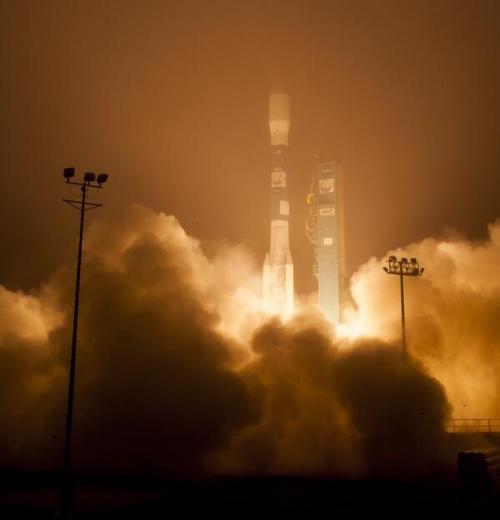
(Photo Credit:NASA/Bill Ingalls)
Following delays, NASA’s OCO-2 mission has now successfully blasted off aboard an United Launch Alliance Delta II rocket. Launched from Vandenberg Air Force Base in California early on Wednesday morning, OCO-2 will begin a landmark mission to survey carbon dioxide gas in Earth’s atmosphere once it arrives in orbit.
NASA’s Orbiting Carbon Observatory-2, known as OCO-2, is expected to provide valuable insights into how our planet adjusts to the increased production of carbon dioxide. From orbit, OCO-2 will be able to take readings on a scale never achieved before.
OCO-2 was from launched from the west coast of America to propel the spacecraft into a polar orbit of the Earth. This flight path sends the satellite over the Arctic and Antarctic regions during each revolution which will provide a complete picture of the Earth. It will fly about 438 miles above the planet’s surface to take its readings.
 (Photo Credit: NASATV)
(Photo Credit: NASATV)
Liftoff was originally planned for Tuesday morning (July 1st) however a last minute failure in the launch pad water suppression system scrubbed the launch. A water deluge system on the launch pad failed to activate as planned, triggering the delay.
The water system helps protect the pad from high temperatures and damaging acoustic vibrations that are experienced during launch. The problem was later traced back to a faulty valve which was part of the pulse suppression water system. The failed valve was soon replaced with a spare which resulted in OCO-2’s successful launch.
 (Photo Credit:NASA/Bill Ingalls)
(Photo Credit:NASA/Bill Ingalls)
While teams on Earth are able to monitor carbon dioxide concentrations, OCO-2 will become the first spacecraft to conduct a global-scale reading over several seasons. The spacecraft is scheduled to produce detailed readings which will provide regional sources of carbon dioxide.
“There’s quite a lot of urgency to see what we can get from a satellite like OCO-2,” said David Crisp, the science team lead for the mission.
This mission is the first of its kind in the agency’s extensive history of Earth-observing satellites. OCO-2 will replace the first OCO craft that failed to reach orbit, due to an anomaly, in February 2009.
 (Photo Credit: NASA/Bill Ingalls)
(Photo Credit: NASA/Bill Ingalls)
The spacecraft carries just one instrument which will investigate the mission’s sole focus: detecting carbon dioxide and watching from space as the Earth “breathes” to see what becomes of the gas.
This instrument is precise enough that researchers on Earth will be able to count the number of carbon dioxide molecules in the layers of the atmosphere. They can then use the data to draw conclusions on how the increasing amount of gas will affect things like the global temperature.
 (Technicians and engineers work on the OCO-2 spacecraft – Photo Credit: NASA/Air Force 30th Space Wing)
(Technicians and engineers work on the OCO-2 spacecraft – Photo Credit: NASA/Air Force 30th Space Wing)
“We’ve been preparing for the OCO-2 mission for almost two years now” explained Tim Dunn, NASA’s launch manager for the flight. “The biggest challenge has been in bringing the Delta II launch vehicle out of retirement. The last time we launched on a Delta II was October 2011, a weather satellite.”
The Delta II has become one of NASA’s most reliable launchers ever, completing more than 150 successful launches for NASA, the Air Force and commercial satellite makers from 1989 to 2011.
After launch OCO-2 separated from the Delta II’s second stage and opened its pair of solar array wings. OCO-2’s mission is set to last at least two years.
The video below explains more about OCO-2’s mission.
[Video Credit: NASA]